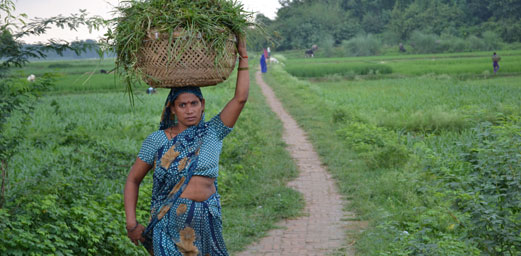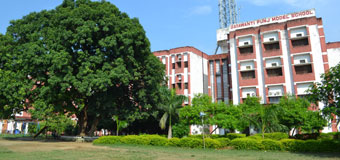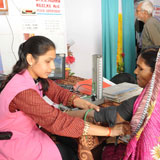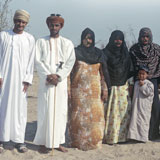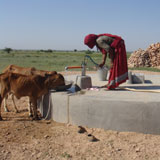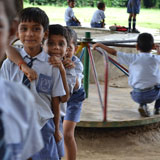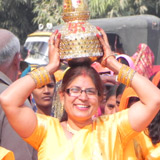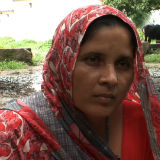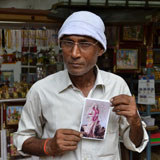Community case studies
- Communities Overview
- Project Site Communities
- Village Development, Sitamarhi
- Village Development, Bap
- Health Initiatives
- Muhammadiyan Welfare Home
Village development
On a visit to the pilgrim place of Sitamarhi in 1994, our then Chairman SNP Punj was taken aback by the poverty and lack of opportunity he saw around him. His findings were what spurred a dedicated, and at times challenging, effort to create a systematic and holistic village development programme, with the aim of tackling the myriad of interlinked social and economic issues in the area.
The programme initially aimed to empower local people to address the basic needs of their families: health, education, home. But over time its remit has expanded to incorporate women’s empowerment, vocational training, nutrition and hygiene education amongst other initiatives.
Through our learnings at Sitamarhi, and the extensive research we have undertaken as part of the programme, we hope to create a scalable village development solution that can be extended across more villages facing similar interlinked socio-economic issues.
Healthcare
A 20 bed, 24-hour hospital provides general and specialist treatment led by husband and wife team. The hospital is equipped with ultrasound, ECG, a dedicated delivery room, x-ray machine, and an operating theatre which is attended by a visiting surgeon from Delhi twice a month. For those from the lowest economic levels, treatment and medicine is at no cost.
The hospital also runs a mobile outreach clinic serving the villages within a 12km radius of Sitamarhi. Operating approximately seven times each month it is able to reach those who are too infirm, elderly or remotely located to travel to the hospital. A fully equipped ambulance forms the centre of the clinic with a general physician and gynaecologist, along with a visiting ophthalmologist. Prescribed medicines, as well as hygienic sanitary pads, are distributed free of cost by the clinic.
Education
The Dayawanti Punj Model School educates over 1,300 students from Sitamarhi and surrounding areas in English medium, from nursery up to Class 12. Over time the standard of achievement has become very high, with 100 percent of students passing Class 10 in first division in 2010. Sponsorships enable poorer children to study and board for free at the school.
A B.Ed teacher training college has been established adjacent to the school, to foster an ecosystem of quality learning, teaching and training that will be sustainable for the future.
Poverty alleviation programme
Through our ground team’s intimate understanding of the families in Sitamarhi and surrounding villages, approximately 1300 family units have been identified as living below the poverty level and enrolled into a poverty alleviation scheme. ID cards are issued to each family to enable them to access and track their benefits throughout the year.As part of the scheme, food grain is distributed on a regular basis at a local food distribution centre. Clothes and solar lanterns are also given at intervals and all families are entitled to completely free healthcare and prescribed medicine from the hospital and mobile health centre.
Shree Sita Samahit Temple
One of the first projects initiated in the village development programme was the construction of the Shree Sita Samahit Temple complex. As the area of Sitamarhi has such significance in the epic Ramayana, it was thought that considerable economic opportunity could be created through facilitation of tourism into the area. The Temple stands beside a natural lake surrounded by well-maintained, landscaped gardens and now receives thousands of pilgrims and tourists every day. The influx of visitors has brought much needed custom to local businesses and enabled the success of new entrepreneurs and traders. It has also created a strong sense of identity for the local people and a point of pride for the area.
Assisted marriages
Supporting women and the girl child has been an ongoing challenge and preoccupation of the village development programme. As was the tradition throughout India, girls’ families in Sitamarhi often have to raise a dowry at the time of marriage. This creates pressure on already stretched finances and encourages families to marry off their daughters at a young age. Tackling this practice long term requires a significant attitudinal shift, which may take generations to take hold.However, as a short-term intervention, Punj Lloyd provides marriage assistance for young men and women from financially disadvantaged backgrounds. The couple need to have completed 10th Standard, be of legal marrying age, and take part in family planning and relationship counselling before marriage. In return they receive a fully funded wedding ceremony and wedding gifts to start their new life, eliminating the need for a dowry.
Vocational and creative education
The Punj Lloyd Bal Bhavan at Sitamarhi provides education, training and creative opportunities to local people. Begun as an initiative for children, the centre now caters to people of all ages, teaching computer literacy, sewing, music, arts and crafts, hair and beauty, photography, and dance, amongst other subjects.
Women are encouraged to attend with half price fees, and all fees are returned to female students on completion of their courses to encourage continued attendance.
The Bal Bhavan aims to provide the inspiration, self-confidence, and skills required for residents of Sitamarhi to take a step forward in their chosen career, trade or interest.

